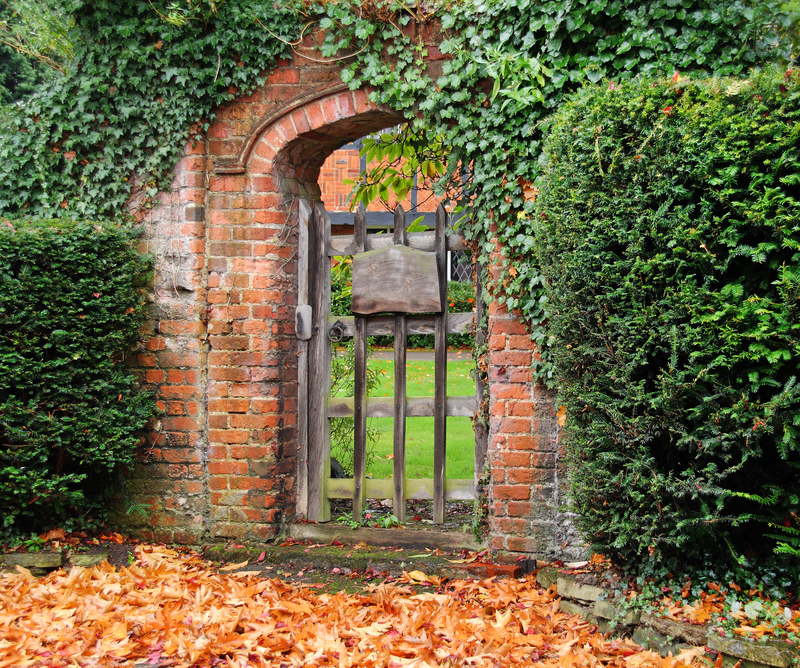Step Into Peace with Exquisite Zen Garden Suggestions
Posted on 04/10/2025
Step Into Peace with Exquisite Zen Garden Suggestions
In today's fast-paced and technologically driven world, finding tranquility at home is not only desirable--it's essential. One of the most beautiful and time-honored ways to cultivate calm is by creating your very own Zen garden. With the right approach and inspirational Zen garden suggestions, you can transform even the smallest of spaces into a sanctuary of peace, harmony, and mental clarity. Step into peace as you explore this comprehensive guide to the art of Zen gardens, tailored for both beginners and enthusiasts seeking fresh and exquisite ideas.

What is a Zen Garden? The Essence of Japanese Serenity
Originating in Japan, a Zen garden (also known as a karesansui or "dry landscape" garden) is a minimalist outdoor or indoor space designed to promote meditation, peacefulness, and contemplation. Traditionally, these gardens use rocks, gravel, sand, and carefully curated plants to represent natural elements such as mountains, rivers, and islands. Every feature possesses symbolic meaning, and the overall design encourages mindfulness and relaxation.
Main Elements of a Zen Garden
- Gravel or Sand: Raked to resemble rippling water or flowing streams.
- Stones and Rocks: Placed deliberately to represent mountains, islands, or stepping stones.
- Moss and Minimal Plant Life: Chosen for subtlety and simplicity.
- Water Features: Sometimes dry, but often suggested through sand or gravel patterns.
- Bridges and Lanterns: Occasional accents offering structure and ancient symbolism.
The Benefits of a Zen Garden
- Peaceful Meditation: Provides a space devoted solely to quiet reflection and stress relief.
- Easy Maintenance: Compared to traditional gardens, Zen spaces require less watering and pruning.
- Mental Clarity: The deliberate arrangement of stones and raked patterns calms the mind.
- Aesthetic Appeal: The minimalist beauty of a Zen garden never fails to enhance home or office environments.
- Nature Connection: Even indoors, Zen gardens help reconnect with nature and seasonal changes.
Getting Started: Planning Your Tranquil Zen Garden
Before delving into Zen garden design suggestions, take a few moments to reflect on the type of peace you desire and the space available. Whether you're considering a mini indoor Zen garden for a desk or a sprawling backyard retreat, start with purposeful planning to ensure harmony and satisfaction.
Choosing the Perfect Location
- Indoors: Ideal for urban dwellers or those with limited outdoor space. Try a tabletop Zen garden near windows or home offices.
- Outdoors: Consider quiet corners, shaded areas, or courtyards shielded from traffic. Even balcony Zen gardens can offer a peaceful escape.
Defining the Scale and Boundaries
- Miniature Zen Gardens: Suitable for desks, shelves or meditation nooks.
- Traditional Outdoor Zen Gardens: Can extend across patios, yards, or entire landscapes.
Setting Your Intention
Ask yourself: What do I want to feel every time I enter this space? Every design choice should foster the peace, focus, or inspiration you crave.
Exquisite Zen Garden Suggestions to Inspire Tranquility
Minimalist Magic: Less is Truly More
Embrace simplicity as the heart of your Zen sanctuary. Select a handful of rocks with distinct shapes, a modest layer of sand or gravel, and focus on empty space as much as filled. Minimalism encourages both clarity and calm, making it ideal for modern homes. Arrange the stones asymmetrically, allowing your garden to feel organic, never forced. Subtle touches like a single bonsai or bamboo stalk can add life without overwhelming the serene palette.
The Power of Patterns: Mastering the Rake
One of the most therapeutic aspects of a Zen garden is raking the sand or gravel into meaningful patterns. Consider these time-honored raking techniques for your garden:
- Ripples and Waves: Mimic the natural motion of water around rocks for a dynamic effect.
- Parallel Lines: Promote steady concentration and tranquility.
- Swirls: Add depth and visual interest to focal points.
- Mazes or Labyrinths: Symbolize life's journey and personal growth.
Experiment regularly; the act of re-raking is itself a meditation and a method to release daily stress.
Moss Mosaics: Softening the Landscape
While most Zen gardens focus on rocks and sand, moss offers velvety green softness and soothes the eyes. Use moss to edge pathways, fill spaces between stones, or even as the central element in a shaded, moist corner. Not only is moss low-maintenance, but it also embodies the transience and quiet resilience celebrated in Japanese culture.
Adding Subtle Accents: Bridges, Lanterns and Water Bowls
Elevate your Zen garden with subtle, symbolic features. A small stone bridge or bamboo water spout evokes a timeless sense of crossing into sacred ground. Traditional Japanese lanterns (such as the toro) add gentle illumination at twilight and reinforce the meditative atmosphere. Water bowls or fountains offer the gentle sound of trickling water--instantly lowering stress levels and attracting birds for natural serenity.
Integrating Plants: Choose Wisely
Zen gardens employ plants sparingly to maintain their minimalist appeal. Select evergreens, dwarf conifers, or ferns for year-round color. A strategically placed bonsai tree symbolizes longevity and discipline. Grasses like acorus or hakonechloa ripple gracefully with the breeze, emphasizing movement and change.
Borders and Paths: Encouraging Mindful Journey
Encircle your Zen garden with understated borders. Use simple stones, bamboo fencing, or wooden slats. Lay stepping-stones or gravel trails, encouraging a slow, mindful walk through your peaceful oasis. Contemplative paths not only frame the space but also reinforce its meditative purpose.
DIY Zen Garden Step-By-Step: Build Your Sanctuary of Stillness
Materials You Will Need
- Fine gravel or white sand
- Naturally shaped rocks (granite, basalt, or quartz are ideal)
- Wooden or bamboo rake (for creating patterns)
- Moss, minimal plants, or a small bonsai (optional)
- Accent features: lantern, water bowl, or bridge (optional)
- Container (for mini Zen gardens) or boundary edging (for larger gardens)
Instructions to Create Your Zen Garden
- Choose your location and size. Mark the boundaries or select a suitable container for tabletop versions.
- Prepare the base. Level the soil or lay down a weed barrier for outdoor spaces. Layer with sand or gravel to a depth of 2-3 inches.
- Position rocks with intention. Place the largest stones first. Allow room for patterns and smaller accents.
- Add accents and greenery. Place moss or plants in shaded areas and incorporate lanterns, bridges, or water bowls if desired.
- Rake patterns in the sand or gravel. Experiment with designs and change them as your mood or the seasons shift.
- Enjoy the peace and beauty daily. Spend a few minutes each day meditating, raking, or simply observing your Zen garden to anchor yourself in serenity.
Creative Zen Garden Suggestions for Limited Spaces
Tabletop Zen Gardens: Peace Within Reach
Perfect for apartments, offices, and classrooms, tabletop Zen gardens bring tranquility to the smallest of spaces. Use a shallow tray, decorative sand, and a few palm-sized rocks. Personalize it with a tiny rake, a pinch of moss, or a miniature pagoda. These Zen gardens are portable and make thoughtful, calming gifts.
Vertical Zen Gardens: Modern Minimalism
Innovate with a vertical Zen garden to save floor space. Layer rectangular wooden boxes with sand, mount on a wall, and secure stones and air plants by embedding them gently. This unique take on the classic Zen style doubles as stunning living art and a calming focal point in modern homes.
Balcony or Urban Patio Zen Corners
Even an urban balcony or tiny patio can evoke the vastness of nature. Arrange gravel, a bird basin, and wind chimes to promote the gentle sounds of nature. Sweet-smelling herbs or potted evergreens in minimalist containers provide both fragrance and comfort in your sky-high sanctuary.
Zen Garden Maintenance: How to Sustain Your Sanctuary
- Regular raking: Smooth the sand or gravel daily or weekly to refresh patterns and maintain order.
- Weed control: Remove any encroaching weeds or falling leaves to keep the space pristine.
- Minimal watering: Only water moss or plants as needed, avoiding over-saturation.
- Seasonal adjustment: Subtly rotate accent features and stone arrangements to reflect changing seasons or moods.
- Mindful engagement: Use maintenance as an opportunity for meditation, not just chores. Hands-on care deepens your relationship with the space.

Frequently Asked Questions about Zen Garden Ideas
Can I incorporate flowers into my Zen garden?
While traditional Zen gardens rarely use bright flowers, you can always opt for subtle blooms such as camellias or irises. Choose pale colors and arrange them sparingly to maintain tranquility and minimalism.
Do Zen gardens have to be outdoors?
Not at all! Miniature or tabletop Zen gardens are ideal for indoor spaces. With a small tray, sand, and rocks, you can bring peaceful vibes to your workspace or meditate without ever stepping outside.
Are Zen gardens expensive to create?
Creating a beautiful Zen garden can actually be quite affordable. Many materials, such as rocks and sand, are inexpensive and readily available. DIY approaches cut down costs and allow you to personalize every aspect.
Conclusion: Step Into Peace with Your Own Exquisite Zen Garden
The best Zen gardens are reflections of their creator's soul. Whether you seek a grand sanctuary or a serene desktop escape, use these exquisite Zen garden suggestions to transform your space into a haven of calm and beauty. Invest time in planning, select each element with intention, and embrace the mindful rituals of garden care. As you step into your personalized pocket of peace each day, let the simplicity, symbolism, and natural beauty of Japanese Zen tradition replenish your spirit--one stone, one pattern, one breath at a time.
Ready to create your own Zen retreat?
Begin your journey by gathering inspiration and crafting your unique design. Your peaceful oasis awaits: all it takes is a single step--step into peace with exquisite Zen garden suggestions today.

